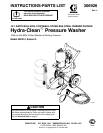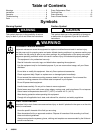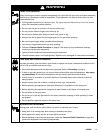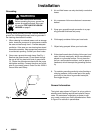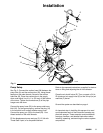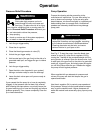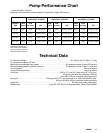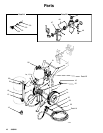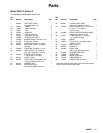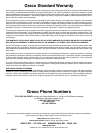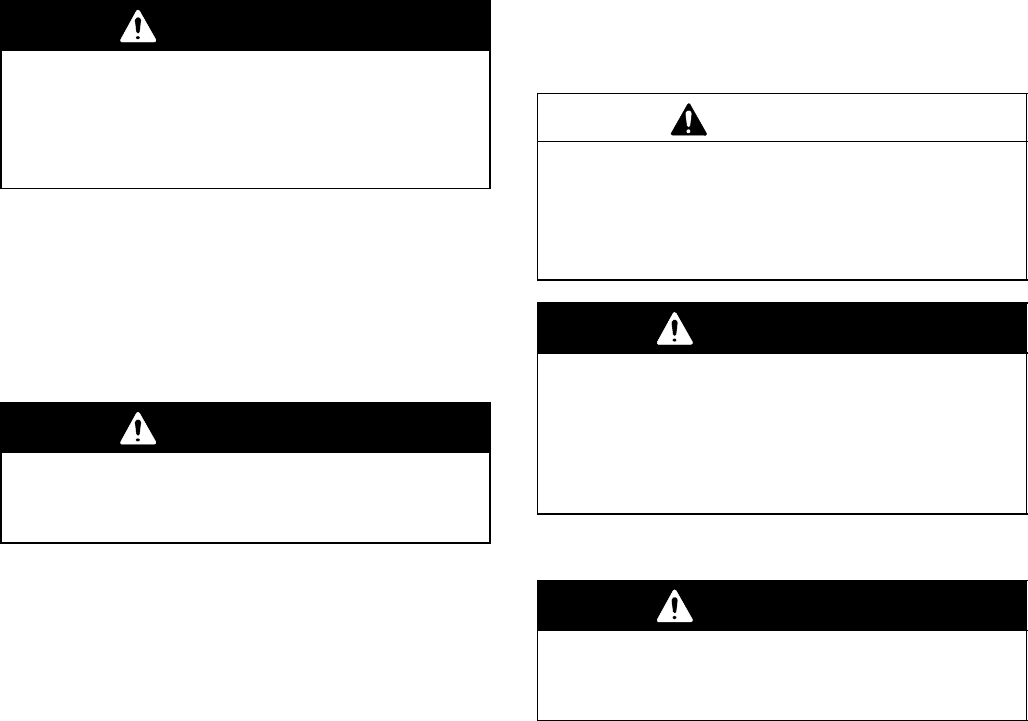
7306926
Operation
WARNING
To reduce the risk of overpressurizing the sprayer,
NEVER exceed 1000 psi (6.9 MPa, 69 bar) Maxi-
mum Working Pressure. If you add any accesso-
ries to the fluid line, be sure they are rated for at
least 1000 psi (6.9 MPa, 69 bar) working pressure.
Adjust the air line lubricator to about two drops per
minute through the sight glass when the pump is
running. Refer to the separate instruction manual,
supplied, for adjustment instructions.
Useful Hints
WARNING
To reduce the risk of serious injury whenever you
are instructed to relieve pressure, always follow the
Pressure Relief Procedure on page 6.
Protect surfaces that may be damaged by the cleaning
solution. Rinse the solution off before it dries.
Hold the spray nozzle about 2 feet (2/3 meter) from the
surface and completely mist-wet the object you are
cleaning. Let the object soak briefly, then use the
spray to “chisel” the dirt off. Keep the nozzle about
6 in. (153 mm) from and at an angle to the surface. If
some dirt remains, wet the surface again, let it soak a
little longer, then hold the nozzle close to the surface to
blast the dirt off. A heated cleaning solution may work
better; check with your cleaner manufacturer.
After all dirt is cleaned off, rinse all the solution off with
clean, cold water. Relieve the pressure whenever you
stop spraying.
Always stop the pump at the bottom of its stroke to
prevent material from drying on the rod and damaging
the packings.
CAUTION
Never let the pump run dry. A pump that is running
too fast can damage itself. Shut the pump off imme-
diately, then check and refill the supply container to
prevent air from being sucked into the system, keep
liquid in the supply container at all times.
WARNING
Check the bleed–type master air valve (E) weekly
to be sure it relieves all air in the motor when in the
closed position. If it is not completely relieved, the
pump could cycle unexpectedly and cause serious
injury. Replace the valve immediately it it is, or
appears to be faulty.
Shutdown and Care of the Sprayer
WARNING
To reduce the risk of serious injury whenever you
are instructed to relieve pressure, always follow the
Pressure Relief Procedure on page 6.
Check the air line lubricator to ensure that it contains
enough oil.
Relieve the pressure, and check the displacement
pump packing nut adjustment often. The packing nut
should be tight enough to stop leakage, but no tighter.
Keep the displacement pump wet-cup (C) 1/2 full at all
times. The TSL helps protect the pump packings. See
Fig. 2.



